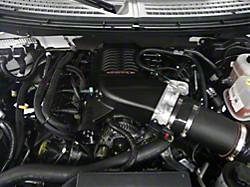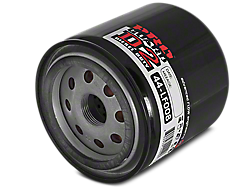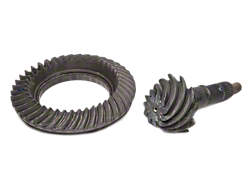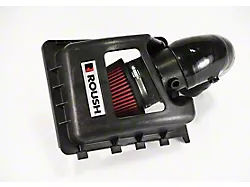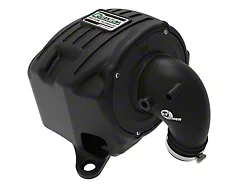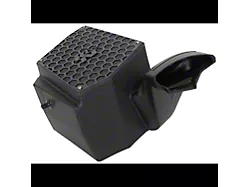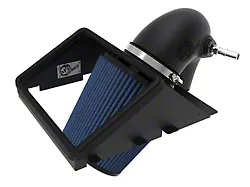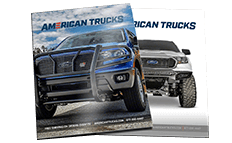Cold Air Intakes: A Classic Performance Mod
Seeing as the latest line of 2015 F150 already draw cold air into their intake systems, the latest aftermarket cold air intake systems place an increased focus on efficiency and restriction. Large, high flow air filters still capture dust and dirt yet are able to flow the air through with less restriction and effort on the engine. The intake pipes are smooth and resist heat absorption, reducing turbulence of the air as it rushes through. The end result is an actual increase in engine horsepower and torque. Furthermore, the increase in respiratory efficiency is exemplified via cleaner and crisper throttle response and engine sound.
Expanding on what was mentioned above; here is how the aftermarket cold air intake filter systems work. Most aftermarket air filters work on the principle of “depth loading”. Made from cotton gauze, or more frequently, a synthetic weave, aftermarket air filters found on cold air intakes feature multiple layers of media in order to trap airborne particles. A depth filtering system can be considered similar to a maze or funnel, catching large particles at the surface and narrowing down to catch progressively smaller particles through the various media layers. In comparison, an OEM-style paper filter uses a surface loading filtration system which blocks and retains particles solely on the outer surface. As the surface layer builds, more and more filter pores become blocked and are no longer able to efficiently pass the air through to the intake manifold, which leads to a decrease in performance as the engine is now working harder to suck the air through. As far as filters go, the depth loading filters used with aftermarket cold air intakes maintain a high filtration level over the course of their lifespan with less, if any degradation, on air flow. Ultimately, a cotton or synthetic aftermarket filter is a lot more durable and will last considerably longer than a paper element. All aftermarket companies claim their filters are a lifetime filter – and this is true (to a certain degree). As long as they are properly cared for, which includes washing them out and oiling them (if necessary), these filters are good to last a long time.
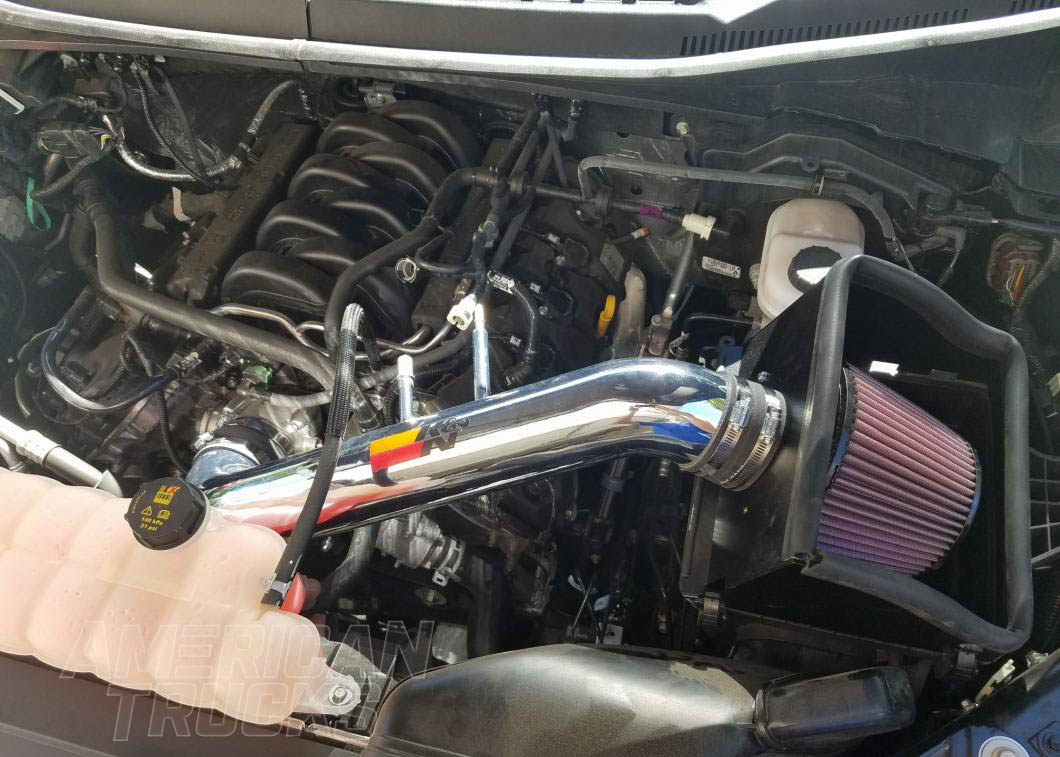
Why Couple an F150 Cold Air Intake with a Tune?
More and more cold air intake systems are presented with an explicit disclaimer saying whether or not they need an aftermarket tune in order to function properly. Those that don’t can safely be slapped on your F150 and taken for a rip around the block immediately after. This would be akin to giving Grandma a regular camera, one that she already knows how to use and any new features would be very easy for her to figure out.
Cold air intakes that require a tune, on the other hand, go back to the analogy of handing Grandma a top-of-the-line SLR camera, with no instructions, when she has been using a basic Polaroid her entire life. She is likely to get confused. The same applies to your F150. Some cold air intakes require the computer be reprogrammed in order for the engine to continue normal operation and take advantage of the performance benefits that the new intake brings. This is due to the actual design of the intake system. Flow characteristics have changed to such a degree that the stock sensors and their factory programming are unable to properly adjust or measure correctly. Perhaps the intake tube is now larger than stock, or the sensor position has changed – either one of these scenarios would result in the stock sensors sending an incorrect reading because they are calibrated to a specific pipe diameter and location. If left like this, you’ll likely be greeted with an illuminated Check Engine Light on the dash and decreased performance. Thus, a tune is like giving Grandma the instructions so she can know exactly how the camera works. By reprogramming the ECU with the correct parameters, your F150 has been optimized to take advantage of the cold air intake as much as possible – meaning a larger gain in horsepower, torque and throttle response.

To Tune or Not to Tune?
If you have purchased a cold air intake that doesn’t require a tune, should you tune it anyway? In one word – yes. Even if your cold air intake does not need to be specifically matched with a tune, an aftermarket ECU upgrade via a handheld tuner will nonetheless further enhance the overall performance of the system, leading to greater gains in horsepower, torque, acceleration and the like versus a non-tuned version. In fact, whilst most speed density based F150 pickup trucks don’t need a tune for a cold air intake, aftermarket manufacturers are developing combination kits – a cold air intake sold with a tuner – where the tuner has been specifically matched for that intake.
On top of increased performance from the cold air intake, a handheld tuner offers a plethora of other customizable options to make your F150 run better and more suited to your personal preferences. Sensor monitoring, data logging, speedometer correction, axle correction, shift firmness etc - these are just a few of the additional items any handheld tuner can do.
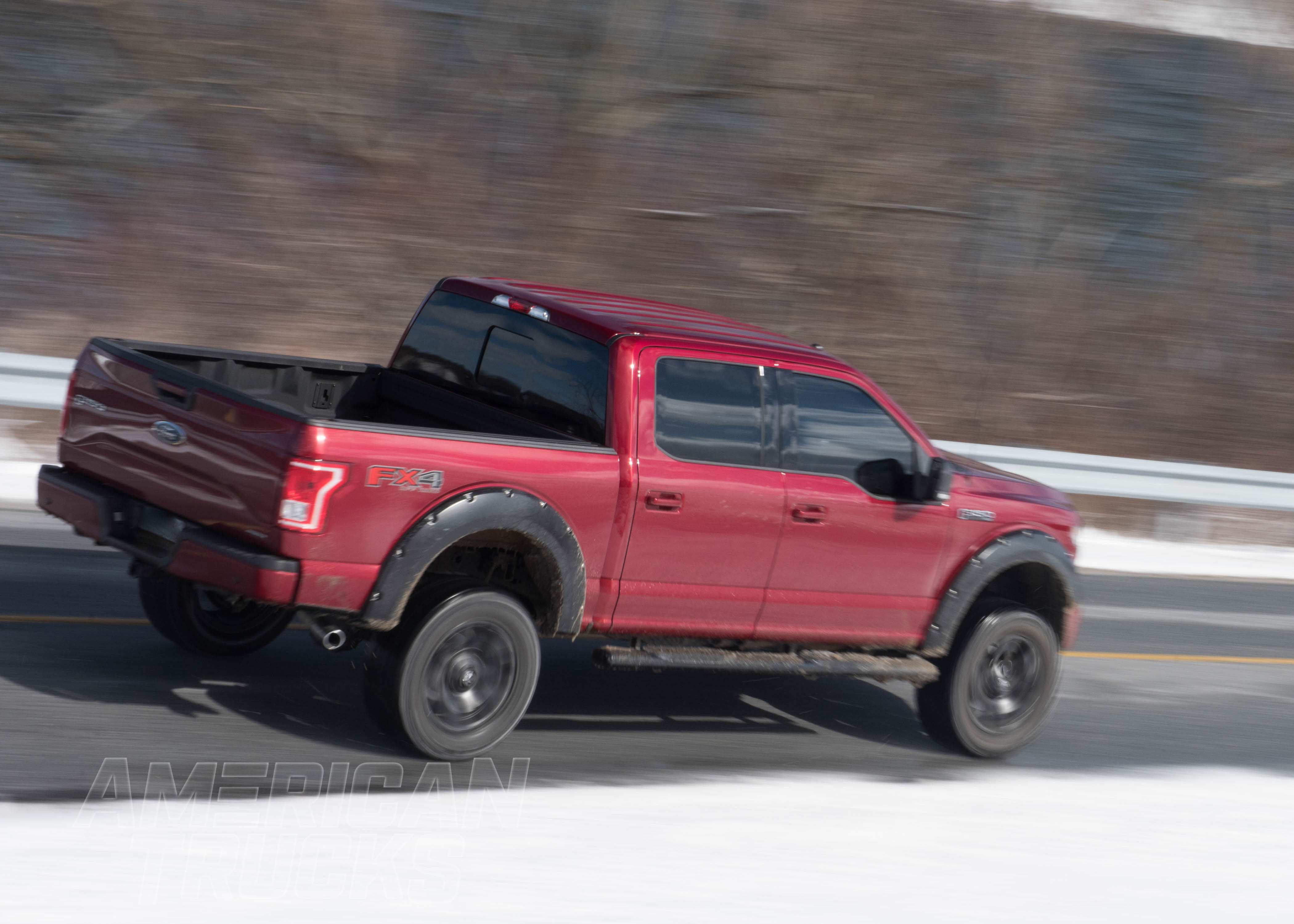
How Much Horsepower Will a CAI and Tuner Produce?
Well, each of the available F150 engines will respond differently and uniquely to each aftermarket intake system. A safe bet for all F150s, from the 4.6L/5.4L Triton days all the way up to the current lineup of the Coyote and EcoBoost motors is about 10-15 horsepower without a tune. When combined with a tune, a safe bet would be 15-25 horsepower for naturally aspirated F150 engines and significantly more – easily 25 HP – for EcoBoost motors. Of course, this can be confirmed by looking up the specific intake for your specific year F150 and engine via the manufacturer’s website or by calling tech support.
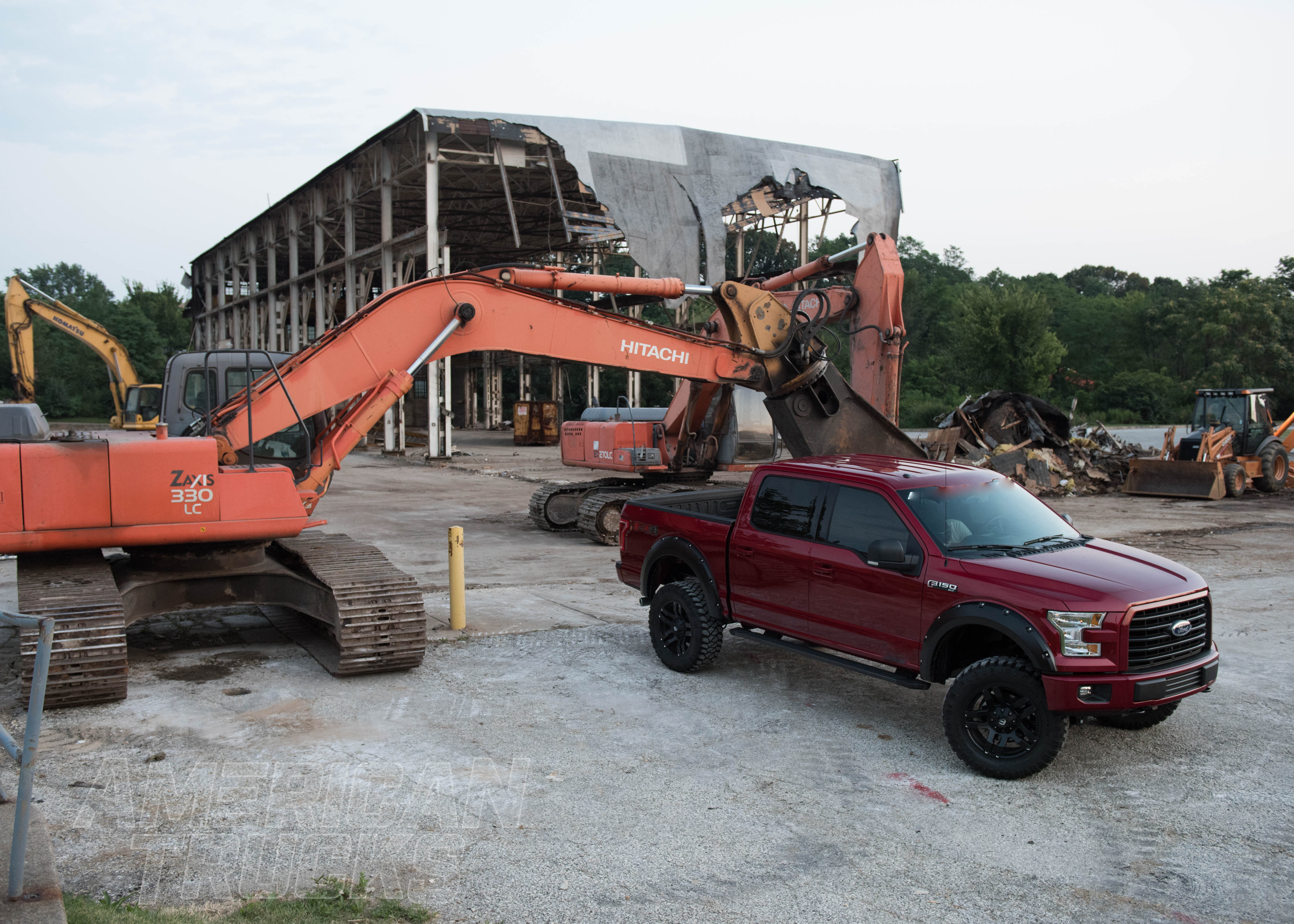
Are Cold Air Intakes and Tuners Really Worth It?
There are staunch advocates all around the web both for and against cold air intakes. The truth of the matter is they do provide some performance enhancements and when combined as a cold air intake/tuner package, the gains are indeed magnified. Help Grandma out. Make sure she gets the proper instructions. Bottom line: there will be a noticeable difference.
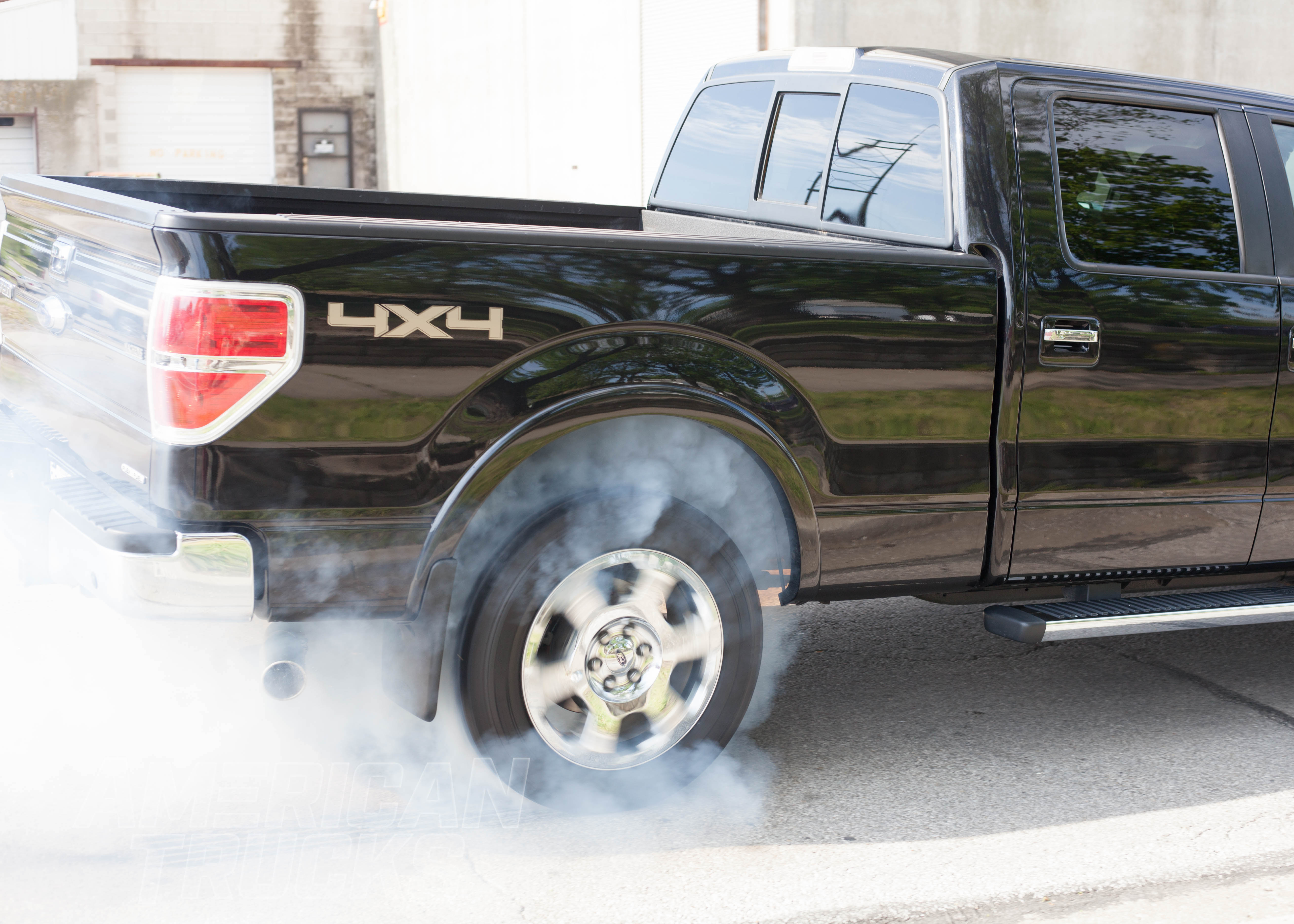
Shop All Truck Accessories & Parts
Fitment Includes:
- 1997, 1998, 1999, 2000, 2001, 2002, 2003, 2004, 2005, 2006, 2007, 2008, 2009, 2010, 2011, 2012, 2013, 2014, 2015, 2016, 2017, 2018, 2019, 2020, 2021, 2022, 2023 and 2024 F150s
- Base Model, XL, XLT, Lariat, Lightning, King Ranch, Harley Davidson,STX, FX2, FX4, Limited, Platinum, Raptor
- 2.7L EcoBoost, 3.5L V6, 3.5L EcoBoost, 3.7L V6, 4.2L V6, 4.6L V8, 5.0L V8, 5.4L V8, 6.2L V8
*Please see product pages for any exceptions.

